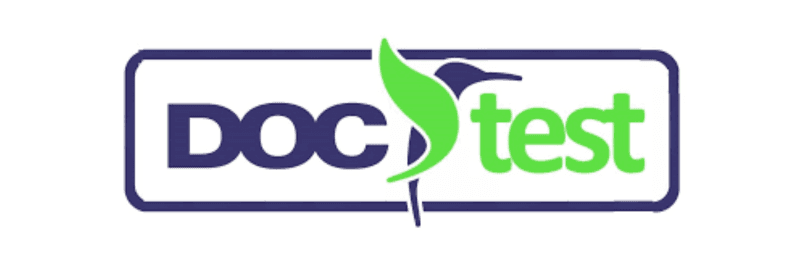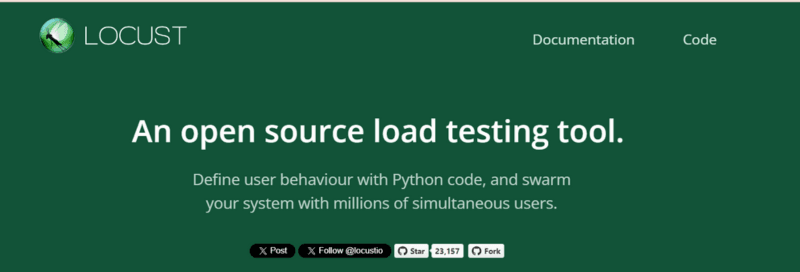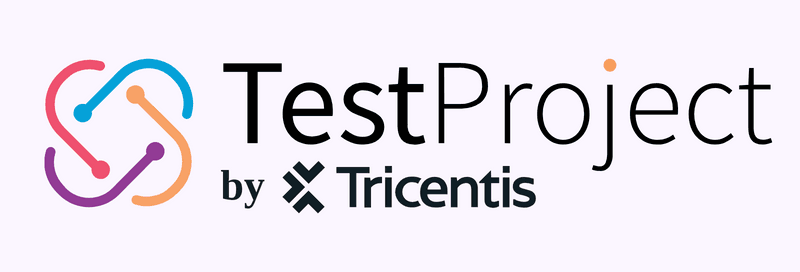Have you ever wondered why there is a need for Advanced Python Testing Frameworks in the field of software development? As software projects get more complicated, ensuring product quality becomes increasingly challenging. This is where advanced testing frameworks come into play, as these frameworks enable developers to identify and address defects more effectively, leading to higher product quality.
This blog explores the 10 best Python testing frameworks currently popular in 2024, providing insights into their advantages and disadvantages, as well as guidance on which framework might be best suited for Python projects.
What is a Python Testing Framework?
A Python testing framework is a tool or a set of tools designed to help with the process of writing, executing, and managing tests for Python code. These frameworks provide a structured environment for developers to create automated tests that verify the functionality and correctness of their software.
They typically offer various features, such as assertion libraries, test discovery mechanisms, fixtures for setting up test environments and reporting functionalities. These advanced frameworks play a crucial role in ensuring the quality and reliability of Python software by automating the testing process and enabling developers to catch bugs early in the development cycle.
Top 10 Advanced Python Testing Frameworks in 2024
If you're unsure about the leading Python testing frameworks, consult the table provided below. It highlights the top four advanced Python testing frameworks widely employed in the field of web development:
| Advanced Python Testing Framework | License | Features |
|---|---|---|
Behave | MIT License | Supports parallel test execution and reporting |
Doctest | Python Software Foundation License | Built-in Python module for testing code snippets within docstrings. |
PyUnit | Python Software Foundation License | Offers test automation, fixture management, and assertion-based testing. |
Lettuce | MIT License | Uses plain English sentences to describe application behavior. |
Till now, we've identified the most dependable and commonly used Python testing framework for 2024. Let's enhance our knowledge further by delving into the top 10 advanced Python testing framework tools to gain in-depth knowledge of it.
1. Behave
Behave is a Python testing framework designed for behavior-driven development (BDD). Behave allows you to write tests in a natural language format called Gherkin. Gherkin uses plain-text descriptions of software behavior written in a business-readable domain-specific language. The tests are written in feature files with the feature extension.
Benefits:
- Promotes collaboration between stakeholders, testers, and developers.
- Encourages writing tests in a human-readable format.
Limitations:
- It can be slower to write tests compared to other frameworks.
- Requires a good understanding of Gherkin syntax.
Best for:
- Projects where clear communication between stakeholders and developers is crucial.
Example:
A team of QA engineers uses Behave to automate acceptance tests for a banking web application. They write feature files describing user interactions like logging in, transferring funds, and checking account balances. Step definitions are implemented to interact with the UI elements and APIs, ensuring the application's functionality aligns with business requirements.
2. Doctest
Doctest is a Python testing framework that allows you to test your code by embedding test cases within the documentation of your code. These test cases look like interactive Python shell sessions and are typically placed within docstrings of functions, classes, or modules.

Benefits:
- Tests are embedded within documentation, making it easy to maintain and understand.
- Useful for simple, quick tests.
Limitations:
- Not suitable for complex test scenarios.
- May clutter docstrings if overused.
Best for:
- Projects with simple functionalities and where documentation is important.
Example:
A Python library developer utilizes Doctest to ensure the correctness of the documentation and implementation simultaneously. They include example usage in the docstrings of functions and classes. By running Doctest, they validate that the examples produce the expected output, serving as both documentation and tests for the library.
3. PyUnit (unittest)
The built-in Python testing framework PyUnit, also known as unittest, draws inspiration from the JUnit framework for Java. It provides a framework for organizing and running test cases and suites, making it easier to automate the testing of your Python code.
Benefits:
- It's part of Python's standard library, so no additional installations are required.
- Supports test automation and fixture setup.
Limitations:
- Can be verbose, leading to longer test code.
- Complex setup for certain test scenarios.
Best for:
- Projects where compatibility with Python's standard library is crucial.
Example:
A software development team employs PyUnit (unittest) to perform unit tests for a newly developed API service. They create test cases to validate the behavior of individual endpoints under various input conditions, ensuring the API functions correctly before deployment.
4. Lettuce
Lettuce is a Python testing framework that facilitates behavior-driven development (BDD) by using plain English sentences to describe the behavior of an application. It allows you to write executable specifications in a human-readable format and draws inspiration from Ruby's Cucumber framework.

Benefits:
- Allows writing high-level tests in plain English.
- Supports integration with various testing tools.
Limitations:
- Requires additional setup compared to built-in Python frameworks.
- Can be slower due to its natural language processing.
Best for:
- Projects following BDD practices and requiring integration with other testing tools.
Example:
A QA team adopts Lettuce to automate acceptance tests for an e-commerce website. They write feature files describing user journeys such as product searches, adding items to the cart, and completing the checkout process. Step definitions are implemented to interact with the web elements using Selenium, verifying the website's functionality.
5. Locust
Locust is a Python-based open-source load-testing tool used for testing the scalability and performance of web applications. Unlike traditional load testing tools that require scripting or recording scenarios, Locust allows you to write your load tests using Python code.

Benefits:
- Allows simulation of thousands of users concurrently.
- Offers real-time insights into system performance.
Limitations:
- Primarily designed for load testing rather than functional testing.
- The Steeper learning curve for beginners.
Best for:
- Projects requiring load testing and performance analysis.
Example:
A performance testing team utilizes Locust to simulate concurrent users accessing a video streaming platform. They write Python scripts defining user behavior, such as browsing content and streaming videos. Locust generates a load on the platform, allowing the team to assess its scalability and performance under heavy traffic conditions.
6. Robot Framework
Robot Framework is an open-source, generic automation framework for acceptance testing, acceptance test-driven development (ATDD), and robotic process automation (RPA). It's written in Python but supports keyword-driven testing for any language. It uses a tabular syntax for test case definition and features an extensive library ecosystem.
Benefits:
- Supports a keyword-driven testing approach, making tests highly readable.
- It is Extensible with Python and other languages.
Limitations:
- May have overhead due to its abstraction layer.
- Requires learning its specific syntax and keywords.
Best for:
- Projects requiring acceptance testing and RPA.
Example:
A team of QA engineers employs Robot Framework to automate acceptance tests for CRM software. They create test cases using Robot's keyword-driven syntax to validate functionalities like user authentication, data entry, and report generation. Robot's extensibility allows integration with various testing tools and libraries to enhance test coverage.
7. Testify
The well-known testing framework unittest served as an inspiration for Testify, a Python testing framework. It is designed to be simple and easy to use, while still providing powerful features for testing Python code. Testify offers features such as test discovery, fixtures, and test runners, making it suitable for various testing scenarios.
Benefits:
- Provides enhancements over unittest, such as better test discovery and reporting.
Limitations:
- Relatively smaller community compared to other frameworks. Limited documentation.
Best for:
- Projects needing an extension of Python's unittest with added features.
Example:
A development team integrates Testify into their project to improve testing efficiency. They refactor their existing unittest-based test suite to utilize Testify's enhancements, such as clearer assertion methods and streamlined test discovery. Testify helps the team maintain a robust testing framework and identify defects more effectively.
8. Splinter
Splinter is a Python library for web browser automation. It acts as a wrapper around other browser automation tools like Selenium, allowing you to interact with web pages using a simple API. Splinter simplifies the process of writing browser automation scripts and is particularly useful for web testing and scraping.
Benefits:
- Supports multiple web drivers like Selenium and PhantomJS.
- Simplifies web testing by abstracting away driver-specific details.
Limitations:
- May not cover all edge cases of web testing.
- Requires understanding of web technologies.
Best for:
- Projects involving extensive web application testing across different browsers and environments.
Example:
A QA team uses Splinter to automate UI tests for a social media application. They write Python scripts to simulate user actions like posting updates, sending messages, and exploring user profiles. Splinter's simplified API for browser automation, built on top of Selenium, enables the team to conduct comprehensive UI testing with ease.
9. Nose2
Nose2 is a successor to the nose testing framework for Python. It's designed to provide a more modern and extensible approach to testing compared to the original nose. nose2 builds on the features of unittest, the built-in testing framework in Python while offering additional capabilities and flexibility.
Benefits:
- Offers plugins for extending functionality.
- Simplifies test discovery and execution.
Limitations:
- Not actively maintained as of my last update.
- Some features might be deprecated or unsupported.
Best for:
- Projects already using unittest and needing additional features without switching to a completely new framework.
Example:
A software development team migrates its test suite from Nose to Nose2 for improved functionality and maintainability. They utilize Nose2's test discovery and plugin system to organize and execute their unit tests more efficiently. The transition to Nose2 streamlines the testing process and enhances the team's productivity.
10. TestProject
TestProject is an automation framework available as open-source software. It offers both cloud-based and locally generated HTML reports, simplifying the process of developing automated tests. It supports Pytest and Unittest frameworks, bundling all necessary dependencies into a single executable agent file that is cross-platform compatible.

Benefits:
- It offers both cloud-based and locally generated HTML reports, providing flexibility in reporting options.
- All required dependencies are bundled into a single executable agent file, ensuring cross-platform compatibility and easy setup.
Limitations:
- It may lack some advanced customization options compared to more complex test automation frameworks.
- Users relying on cloud-based features may face limitations or constraints based on the availability and performance of TestProject's cloud infrastructure.
Best for:
It is ideal for teams working on smaller projects or those looking for a straightforward and easy-to-use test automation solution.
Example:
A QA team utilizes TestProject to automate tests for a mobile banking application. They write test cases in Python using TestProject's SDK to validate functionalities such as account login, fund transfers, and transaction history retrieval across different mobile devices. TestProject's built-in capabilities for mobile testing facilitate efficient test automation and result reporting.
Why Do We Need Python Testing Framework?
Now, let's explore the different aspects outlined below that illustrate the necessity for advanced Python testing frameworks:
Ensuring Code Quality:
Testing frameworks allow developers to verify that their code functions correctly and meets the specified requirements. This helps ensure the overall quality of the software.
Automating Testing Process:
Testing frameworks automate the process of running tests, making it easier and faster to execute tests and identify issues in the codebase.
Detecting Bugs Early:
By writing tests before or alongside the implementation of code, developers can catch bugs and issues early in the development process, reducing the cost and effort of fixing them later.
Enabling Regression Testing:
Testing frameworks enable regression testing, where previously working features are tested again after changes or updates to ensure that no new bugs have been introduced.
Conclusion
In this article, we've looked into the best 10 Python testing frameworks. Each framework has its own benefits and limitations. However, choosing the right Python testing framework depends on what your project requires and the expertise of your team. Therefore, utilizing advanced Python testing frameworks can help in addressing the evolving needs of modern software development by offering features that enhance product quality, efficiency, scalability, and collaboration.






